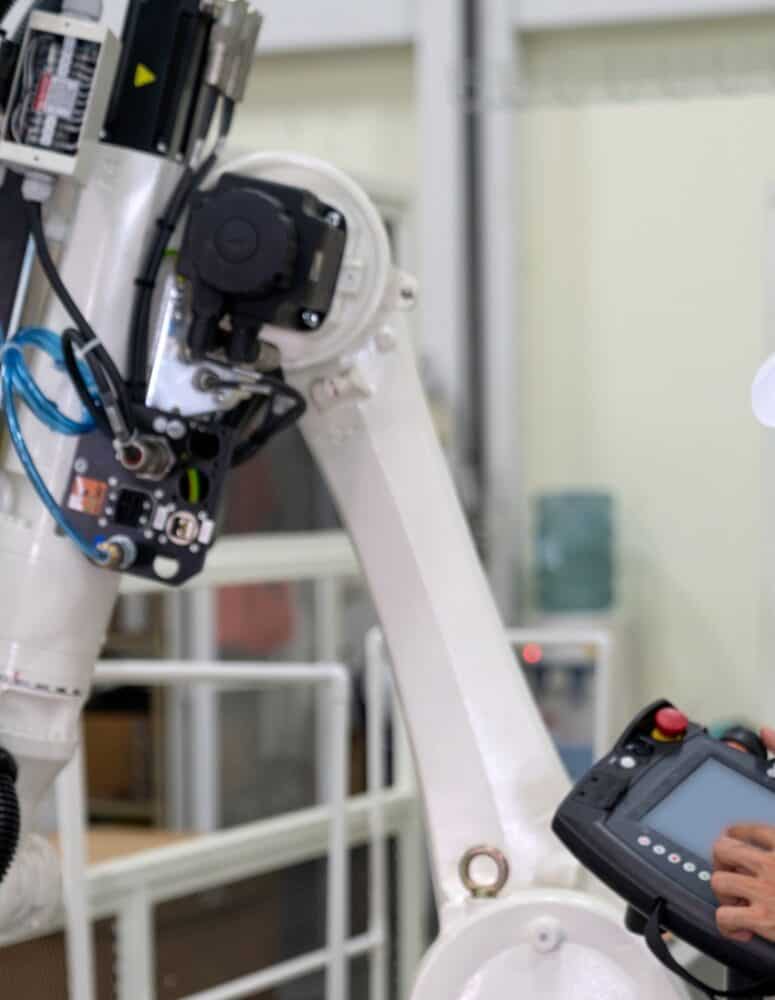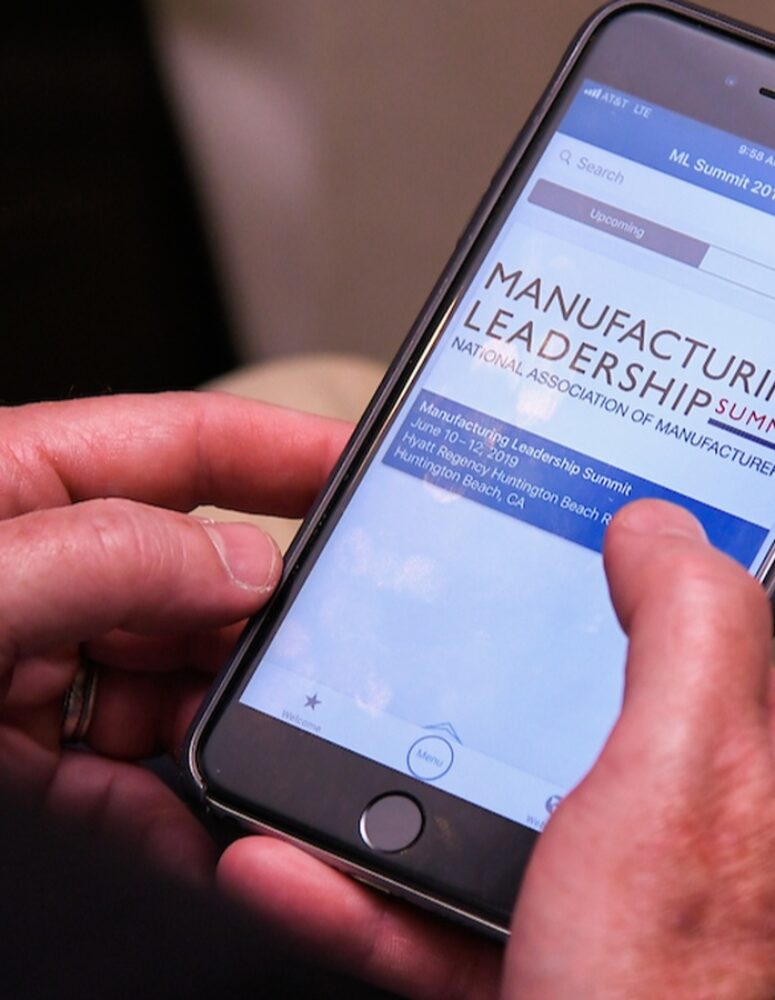AI’s Outcomes Rely On Its Rollout
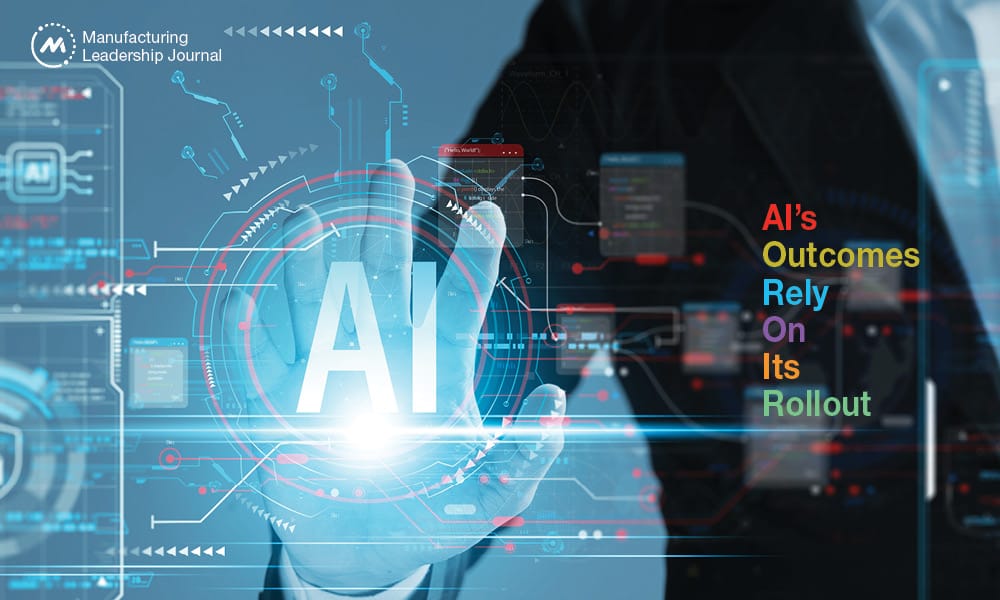
If done right, AI will revolutionize everything from safety and quality to efficiency and maintenance

TAKEAWAYS:
● AI represents a unique opportunity to improve the efficiency of production, especially when it comes to preventative maintenance.
● Integrating AI into production can increase cyber risk by creating new potential access points for bad actors.
● More extensive training is required for AI to accomplish complex tasks, while repetitive tasks require less training.
For centuries, manufacturers have faced the challenge of addressing safety hazards in factories while boosting efficiency and controlling costs. Now, many manufacturers are learning that artificial intelligence (AI) can help them make new strides when addressing protracted worker safety and efficiency challenges. Consequently, it is no surprise that 36% of manufacturers say they will pursue Industry 4.0 investments according to the 2023 BDO Manufacturing CFO Outlook Survey. As more manufacturers explore AI’s future and how it can help them improve safety and efficiency, it is critical that they set themselves up for success by securing employee buy-in and preparing factory infrastructure to take full advantage of AI-based systems.
Today, much of the public has become aware of generative AI, such as OpenAI’s ChatGPT, with its ability to quickly answer complex problems with written prompts. Generative AI is exciting to the general public, but many plant managers are passionate about AI systems that are specifically designed to operate in a manufacturing setting. Rather than only using written prompts, AI systems used by manufacturers leverage inputs from computer vision, lasers, and other sensors to predict when a safety issue may occur, which robot caused a manufacturing defect, and how machines should be calibrated to minimize downtime.
Leveraging Technology to Combat Safety Hazards
Despite decades of regulations and improved protocols, safety issues persist in modern manufacturing. Updated safety codes and maintenance plans cannot always prevent worker injuries that result from negligence or unpredictable hazards in a manufacturing facility. While strong employee training programs remain one of the best ways manufacturers can improve safety in settings from chemical plants to automobile factories, even the most dedicated employees are not constantly vigilant to workplace dangers. This is why many manufacturers are investing in AI-powered safety systems, which can predict when and where a safety violation could happen, allowing plant managers, and sometimes the AI itself, to remedy the situation before it becomes irreparable.
However, to work successfully with AI, workers need to be trained to interact with these new systems. The latest advancements in augmented reality (AR) and virtual reality (VR) technologies enable companies to make training programs for employees who interact with AI-powered safety systems even more effective, further empowering workers to keep themselves safe. AR or VR simulations can give employees a sense of what it is like to work with potentially dangerous machinery in preparation for operating the real equipment. Workers can also practice carrying out the necessary safety procedures before entering a secure area or shutting down a robot in need of repairs on the factory line. These AR- or VR-enabled training exercises can reduce the likelihood of mistakes, which could result in worker injury or damage to machinery.
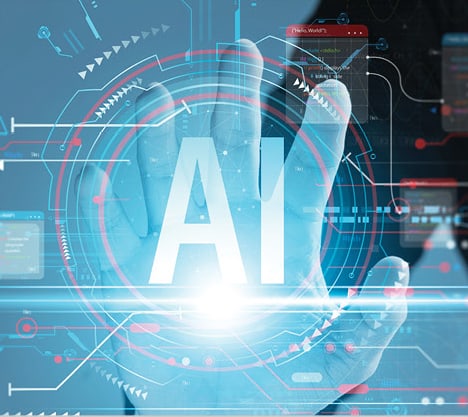
“Many manufacturers are investing in AI-powered safety systems, which can predict when and where a safety violation could happen”
While AR and VR training can help workers keep themselves safe, these simulations can also teach factory employees about AI systems designed to improve safety. Many workers have never interacted with AI systems tasked with actively reinforcing safety guidelines before and may be inclined to ignore or distrust safety alerts that do not come from a person. AR and VR training can incorporate scenarios where a machine breaks down, or a co-worker fails to follow safety protocols to teach employees about which hazards an AI safety system can detect and how they should respond.
Detect Issues with Computer Vision
One of the main methods AI safety systems detect potential hazards is through computer vision. This technology lets AI “see” the factory floor through cameras, allowing the AI to raise safety alerts in real-time if, for example, it observes employees who might not be wearing the proper personal protective equipment (PPE). In geofenced safety zones, a computer vision-enabled AI can shut down equipment, restrict access to certain areas, and alert employees if it sees or anticipates a safety concern. It is important to note that AI-based safety systems are not a replacement for traditional training. Rather, AI-enabled computer vision is an important tool that factory managers can use to make their plants even safer.
AI can also help manufacturers improve safety on an individual employee level with the help of data analytics. An AI system can keep tabs on the number of safety incidents an employee is involved with, like warnings or violations. Then, AI can take this data and factor it in with individual employee information to construct a holistic view on a worker’s safety record. This record can be informed by data like years of experience, hours worked, and metrics collected from a wearable device like body temperature, muscle strain, and the amount of weight lifted per shift by the employee. Manufacturers can use this to better understand if their employees are under too much strain to sustain a safe working environment. Not only can manufacturers use AI-powered data analytics to determine which employees would benefit from additional safety training, plant managers can also use this information to better match employees to tasks based on their skills and physical abilities.
For decades, manufacturers have tapped robots to take over tasks that have a high risk of causing worker injury. Keeping humans away from heavy, moving machinery, toxic chemicals, and other risky environments has allowed manufacturers to place people in safer roles where specific skills and dexterity are highly valued. For example, even the most capable human workers possess a limited field of view. A forklift crash in a warehouse caused by a worker who failed to pay attention or missed a small hazard in their way could be devastating. However, an AI-powered forklift can use computer vision to monitor for hazards across the warehouse, reducing the risk it could bump into an employee or be crushed by a stack of pallets it crashed into. The former forklift operator could be reskilled into an oversight or maintenance role where they could provide even greater value.
Manufacturers can also assign dangerous inspection tasks to AI. Drones equipped with AI can inspect products stacked up to the high ceiling of a warehouse and determine the stability of the inventory. In plants where noxious fumes or dangerous chemicals are present, AI-powered robots can limit human exposure to potential hazards by performing regular maintenance and monitoring tasks. When humans must be involved in chemical plant turnarounds and total cleanouts, AI can monitor for safety compliance and environmental hazards.
Embracing the New Efficiency Paradigm
AI also represents a unique opportunity to improve the efficiency of production, especially when it comes to preventative maintenance. Currently, most factories use pre-scheduled maintenance plans to help prevent manufacturing errors that could stymie production. While maintenance schedules have undoubtedly prevented production disasters, pre-scheduled maintenance plans can be inefficient because they are not always informed by actual repair needs.
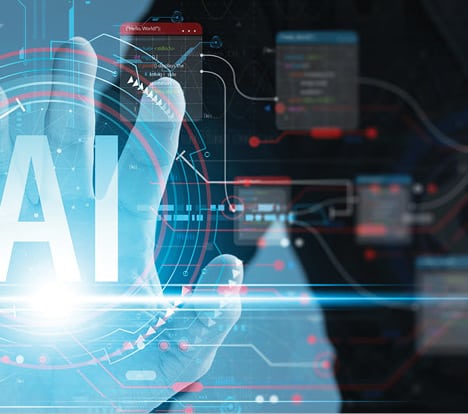
“Publicly available generative AI systems can hallucinate, including making up facts, citing nonexistent sources, or other false information”
On the other hand, a predictive maintenance plan powered by AI can allow plant managers to perform maintenance exactly when and where it is needed. By gathering information from transducers and other sensors, AI can monitor equipment temperatures, current power draw, and the status of different machine parts. This can help an AI system predict and prevent failures. When the technology detects an impending problem, a predictive maintenance system can further limit downtime by scheduling repairs when they will be least disruptive to factory operations.
AI can also support quality assurance (QA) and quality control (QC) by using laser distance sensors to perpetually scan for errors across a vast and fast-moving production line. In addition to keeping tabs on the quality of manufactured goods, AI can help plant managers keep machines properly calibrated by monitoring tolerances. Because many QA and QC tasks are highly repetitive, an AI system that has been taught which defects to look for can perform these tasks, allowing employees to focus on higher-value tasks within the plant.
In addition to preventing production problems, AI can also be used to address manufacturing defects and prevent similar ones going forward. In the event a customer returns a product, a plant manager can use a serial number to quickly determine when the production error occurred, and even which machine caused the error. Traditionally, diagnosing and solving the issue which caused the production error can be time consuming. However, an AI system with laser distance sensors can scan the product to determine the exact nature of the error and then ascertain which machine caused the error and how the equipment can be recalibrated to both fix and prevent the issue. This allows a factory to reduce both downtime related to diagnostics and inventory lost to production errors.
AI’s Risks
AI is not without risks. Integrating AI into production can increase cyber risk by creating new potential access points for bad actors. Manufacturers pursuing AI must consider the risks related to cybersecurity and take measures to mitigate potential issues. Additionally, publicly available generative AI systems can hallucinate, including making up facts, citing nonexistent sources, or other false information. Businesses that do not put safeguards in place to check these outputs could make decisions based on inaccurate information. Finally, if a company enters proprietary data into a publicly available generative AI, it does not have control over how that data is stored or used by the AI. This means it could be hacked or used to inform answers the AI provides to other users.
Approach to Adoption
While the future of AI in manufacturing could involve a revolution in production efficiency, it is important to understand where this technology might not be a fruitful investment. The less repetitive and homogeneous the task, the more extensively an AI needs to be trained by humans to properly execute it. Jobs which require greater dexterity, creativity, and experience may simply be better for a human to perform from both a cost and quality standpoint. For example, a local furniture factory may find that a worker assigned to evaluate fit and finish may only be able to flag 90% of errors. Even if an AI equipped with computer vision and laser distance sensors could flag 99% of defects, the cost and complexity of training an AI to correctly spot miniscule flaws may make a digital QA/QC improvement strategy untenable.
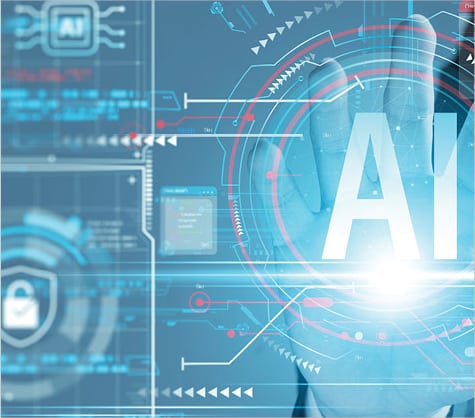
“The cost and complexity of training an AI to correctly spot miniscule flaws may make a digital QA/QC improvement strategy untenable”
When it has been determined that AI-based systems are feasible tools, manufacturers should carefully evaluate the potential ROI by clearly outlining which capabilities their plant actually needs. For example, a plant that produces dangerous chemicals may need the infrastructure to support a robust network of air quality sensors across an entire plant. On the other hand, a large candle factory might only need to support air quality sensors in specific rooms, and thus has smaller infrastructure requirements. Finally, given worker concerns over the efficacy of AI-powered safety systems, plant managers must also help employees overcome their skepticism with a transparent dialogue.
Preparing to Adopt AI Systems in Manufacturing Facilities
Tools like computer vision, sensors, and drones require adequate networking capabilities to be effectively used by an AI system in a manufacturing setting. While networking is an additional expense, the barrier to entry for powering AI-powered systems is lower than many manufacturers may think. In most cases, 5G wireless networking is not cost-prohibitive and is more than sufficient to provide fast, reliable connectivity.
A third-party vendor can be tapped to install the 5G networking equipment and software, as well as provide regular maintenance, software updates, and technical support. AI systems which rely on 5G-connected inputs can also be provided by third-party vendors, who may charge a monthly subscription to use their software or hardware. For most manufacturers, using a third-party vendor to supply and manage AI systems and networking equipment can help save money while allowing them to stay up to date with the latest technologies.
Enabling Employee Adoption
While the infrastructure for AI-based systems can be paid for with a monthly subscription, securing buy-in from factory workers being instructed to adopt AI systems is more complicated. Manufacturers can employ a variety of strategies to help employees understand that AI can make their jobs safer — not render them obsolete.
To overcome skepticism, manufacturers should start by demonstrating success via small pilot projects that illustrate the value of AI systems to workers. Tapping an influential employee to serve as an AI ambassador can help make pilot success stories more personal and authentic during discussions with skeptical employees and stakeholders. Demonstrating that workers’ safety is a priority and providing a platform for their concerns to be heard can also build faith that AI systems are there to support them in the workplace.
Depictions in popular culture often characterize AI as a risky unknown, or as a tool that executives use to automate away manufacturing jobs. Manufacturers should reiterate to workers that their industry faces a labor shortage, and rather than replacing jobs, AI can help factories fill some of the roles for which companies are struggling to hire. AI can also open doors for current employees to move into more productive, less repetitive roles. This could allow many workers to deploy their skills in a more valuable way while also working in a safer environment.
The Future of AI in Manufacturing
AI has the potential to transform worker safety and boost efficiency — but not in a vacuum. Manufacturers should take care to determine that investments in AI, including employee training, infrastructure development, and buy-in campaigns, will likely lead to tangible improvements to worker safety and generate cost savings from efficiency gains. For example, manufacturers won’t realize the benefits of sensors and cameras tasked with helping an AI system prevent manufacturing defects if the networking equipment that connects them to an AI system is unreliable or inadequate.

“Tapping an influential employee to serve as an AI ambassador can help make pilot success stories more personal and authentic”
Even with the most meticulously planned AI systems, manufacturers who are serious about AI success must train and educate workers to make them feel more confident in AI. Highlighting AI success stories, especially those that emphasize collaborative roles with employees, can help earn the support of factory or warehouse staff. Without employee buy-in, manufacturers may struggle to improve worker safety or boost efficiency with the power of AI.
Over the coming decades, new technologies are likely to help manufacturers achieve ever greater improvements to worker safety and factory. As companies grapple with the implementation of today’s AI technology, plant managers should remember that even the most exciting technologies can change little on their own. Manufacturers who learn to quickly secure employee buy-in and source a strong infrastructure of supportive technology will find themselves leading innovation rather than following other innovators. M
About the author:

Maurice Liddell is Principal and Senior Market Leader at BDO Digital
Welcome New Members of the MLC October 2023
Introducing the latest new members to the Manufacturing Leadership Council


Sudhir Arni
Senior Vice President, Customer Success
Sight Machine

sightmachine.com
![]()
https://www.linkedin.com/in/sudhirarni

Steve Boyd
Vice President, Manufacturing Strategy
Dover Corporation

dovercorporation.com
![]()
https://www.linkedin.com/in/steven-boyd-60786936
Gustavo Chohfi
Vice President, Quality Assurance and Continuous Improvement
Cornerstone Building Brands
![]()
cornerstonebuildingbrands.com
![]()
https://www.linkedin.com/in/gustavochohfi

Eric Murray
Vice President, IT/Digital
Cretex Companies
![]()
www.cretex.com
![]()
https://www.linkedin.com/in/eric-murray-mn

Jim O’Connor
Director of Enterprise Architecture
Graham Packaging

grahampackaging.com
![]()
https://www.linkedin.com/in/jim-o-connor-11022b10

Regina Salazar
CIO
Novelis Inc.
![]()
novelis.com
![]()
https://www.linkedin.com/in/regina-salazar

Sema Tekinay
Practice Partner – Transformation & Continuous Improvement
Messer
![]()
https://www.linkedin.com/in/tekinay

Matt Townsend
Vice President, Digital Transformation
Medtronic
![]()
https://www.linkedin.com/in/matt-townsend-05004319a

Dave Wingard
Global Leader Manufacturing Excellence
Westrock
Getting the Most Value from AI Investments
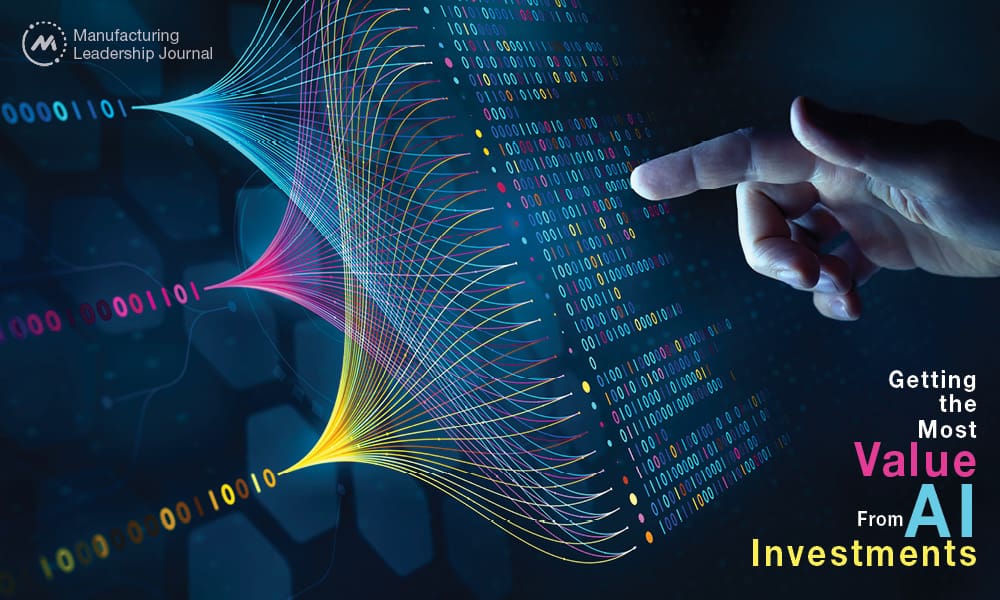
To capitalize on AI, manufacturers must learn how to prepare and analyze their data.

TAKEAWAYS:
● Manufacturers need to develop a thorough understanding of their data and the proper protocols for using that data.
● Manufacturers can use advanced technologies like AI to become more nimble, deliver better operational insights, and gain a more nuanced understanding of customer needs and relationships.
● To take full advantage of their data, manufacturers need to focus on data and system architecture, data governance, and data analytics.
The manufacturing sector historically has been a slow adopter when it comes to investments in artificial intelligence (AI) and other transformative technologies that require a solid foundation of data and clear practices around data use. It’s common for organizations to have vast amounts of data but lack insight from that data for several reasons, including the persistence of manual data collection, information existing in silos, and failure to segment customers in meaningful ways.
There has been significant hype around generative AI in 2023, but feeding the appropriate data into such AI tools is critical if companies want to benefit from the technology. Manufacturers looking to exploit advanced technologies to their fullest extent need to develop a thorough understanding of what data they have and proper protocols for using that data. Companies must capture, curate, and cleanse the data they have before they can determine how best to monetize them.
By first preparing the data properly, teams will then be able to use data not just for day-to-day operational tasks or metrics—such as how much product shipped on a given day or how inventory levels have changed in recent months—but to think more creatively about what else they can learn from data sets.

“Manufacturers that foster curiosity among their leadership and employees about AI will better position themselves to creating a factory of the future.”
Manufacturers that foster curiosity among their leadership and employees will better position themselves to create a factory of the future. Being a leader in AI will be necessary to remain competitive. According to a June 2023 Manufacturing Leadership Council survey about AI in 2030, “while many manufacturers may only just be starting to leverage the possibilities of AI, they also have clear plans to accelerate that adoption significantly in the years ahead, with AI investment levels expected to rise in a substantial 96% of all the companies responding to the survey.”
Think Bigger: Developing a Research Agenda
The use of AI in a manufacturing setting goes well beyond the shop floor. Companies can harness AI to improve quote-to-cash and order-to-cash processes, identify revenue leakage in business models, and assess whether the business has effective contract procedures in place, for instance. Many of these applications come down to figuring out where the business lacks key processes, or where processes aren’t being followed.
For companies setting out to explore how AI can improve their business—whether via process mining, robotic process automation, or machine learning—developing a research agenda can help. That agenda should examine these key elements:
- Data outputs: Does the organization fully understand the key outputs/outcomes it is measuring? Are there other outputs that would be useful to capture?
- Correlations: How do various outcomes compare to each other, and are there indications that they may have a significant relationship?
- Explanatory variables: Which relationships between data outputs might be especially useful or informative going forward?
- Dimensions of analysis: What are the various ways teams can analyze data points to understand customer behaviors better? Are there seasonal or geographic implications?
Using internal and external data to support this research agenda can help companies identify new opportunities and reduce the amount of uncertainty they face in both the short term and long term.
Becoming a nimbler organization and delivering better operational insights to leadership are two important ripple effects of honing this agenda and reducing uncertainty. Perhaps even more critical is the ability to gain a more precise understanding of customer needs and relationships. Manufacturers can use AI to ferret out relationship patterns, meaningfully segment customers, and determine costs associated with various relationships. These insights can ultimately enable companies to develop more tailored approaches to their customers, partners, and vendors.

“Manufacturers can use AI to ferret out relationship patterns, meaningfully segment customers, and determine costs associated with various relationships.”
Optimizing supply chains, improving quality control, and making the shift from reactive maintenance to proactive, predictive maintenance are specific areas where manufacturers stand to benefit most from AI. Predictive maintenance, for instance, uses AI algorithms to analyze real-time data from sensors and other equipment to anticipate equipment maintenance needs and failures. By continuously monitoring data from the factory floor and comparing that data against key performance indicators, AI can detect anomalies or early signs of equipment malfunction. This allows for proactive measures to avoid costly, unplanned downtime and improve the life span of the equipment.[1]
Performing maintenance prior to failure leads to cost savings and minimizes costly repairs or replacements. By leveraging data analysis, pattern recognition, and predictive modeling capabilities, industrial organizations can optimize equipment performance, increase operational efficiency, reduce costs, and enhance overall productivity.[2]
Improving Your Data: Where to Start?
Manufacturers don’t always know where to begin to improve their ability to harness, filter, and analyze data. Connectivity among machines, products, employees, suppliers, customers, and processes across the value chain is critical to gaining actionable insights, but enabling that connectivity with Industry 4.0 technologies must be intentional.
To be able to take full advantage of the enormous amount of data they generate and collect, manufacturers need to focus on three foundational areas:
- Data and system architecture: Understand how to balance traditional system architecture with newer architecture such as cloud-based storage and Internet of Things devices.
- Data governance: Implement clear standards around the collection and use of information.
- Data analytics: Harness advanced analytics to go beyond pattern identification and develop truly predictive capabilities.
Manufacturers also need to make sure that teams throughout the organization have the same baseline level of data literacy, and provide training as needed to align that literacy. Data literacy makes it easier for teams to adhere to the same data processes, policies, and standards around information protection and security.

“Once manufacturers have created a solid data foundation and fostered a sense of curiosity among employees, they can determine how AI tools may benefit their business in the future.”
Ensuring that employees have a common understanding of data inputs, outputs, and applications will become increasingly important as members of the aging workforce retire, taking their institutional knowledge with them. Getting teams across the organization well-versed in how to identify and solve problems with data will be an enormous asset as experienced workers leave.
Looking to the Future
Once manufacturers have created a solid data foundation and fostered a sense of curiosity among employees, they can determine how AI tools may benefit their business in the future. They would need to consider the following:
- People: Identify worker-led tasks that generative AI could enhance, ultimately driving greater productivity.
- Revenue streams: Technological tools can help identify potential new sources of revenue.
- Data strategy: Collecting more proprietary data throughout operations can improve the company’s competitive advantage.
- Integration: Formalize best practices for merging generative AI with current workflows.
It would be irresponsible to implement AI in any function of the business, however, without addressing risks and challenges associated with the technology. These include ethical issues, job displacement, and data security and reliability. Any manufacturer looking to capitalize on the transformative power of AI needs to have a clear understanding and assessment of these risks if they want to reap any benefits. M
About the authors:

George Casey is a principal at RSM US LLP.

Matt Dollard is a principal and an industrials senior analyst at RSM US LLP.
[1] The content in this paragraph was originally published in an RSM article titled “The potential for artificial intelligence to transform manufacturing.”
[2] The content in this paragraph was originally published in an RSM article titled “The potential for artificial intelligence to transform manufacturing.”
AI Driven Solutions for Manufacturing Excellence
Thanks to the rising ease of adopting cutting-edge technologies like artificial intelligence, Internet of Things (IoT), big data analytics, and robotics, manufacturing is booming across the world. In the United States, for instance, a manufacturing boom has swept across the country in the last two and a half years, with the South and Mountain West having especially strong growth, according to Bureau of Labor Statistics (BLS) data1. The U.S. economy has added some 800,000 manufacturing jobs nationwide in just the last couple of years. In terms of numbers, Texas is the top state for new manufacturing jobs, with 86,000 new positions, from January 2021 to May 2023, according to BLS data. Next comes California with 79,000 jobs; Florida with 37,000; Ohio with 31,000; and Georgia with 29,000. Nevada had the greatest percentage increase at 15%, followed by Montana at 11% and Wyoming at 10%.
Manufacturing has never not been a strong suit of the U.S. In fact, the country produces 40% more factory output today versus 20 years ago, but with 5 million fewer workers, per the American Enterprise Institute2. In 2017, the U.S. produced about four times more factory output than in the 1940s with about the same number of factory workers, which is around 12.5 million! The “culprit,” if any, has been automation, including advances in technology and the rising productivity of U.S. factory workers.
New, smart manufacturing investments provide a perfect opportunity to build (back) smarter and stronger. Manufacturers now are unlocking new levels of efficiency, productivity, and competitiveness as they quickly adopt automation and digitalization. The combined power of OT and IT DataOps and domain-specialized AI and ML models is enabling manufacturers to unlock new levels of efficiency, productivity, and competitiveness. However, there are challenges to overcome on the path to realizing the full potential of smart manufacturing. In this article, and based upon the discussions we had at the recently held MLC Rethink Summit, we will explore some strategies to overcome these challenges and drive enterprise-wide transformation.
The adoption of advanced tools, solutions and processes in smart manufacturing is gaining traction across industries. It is projected that the global smart manufacturing market will grow from $297.2 billion to $787.5 billion by 2030, at a compound annual growth rate (CAGR) of 14.9% (source: Grand View Research). According to MarketsandMarkets, use of AI in the manufacturing market is projected to reach $16.7 billion, at a CAGR of 47.9% from 2022 to 2027. These figures highlight the immense business value of smart manufacturing practices.
What are some of the biggest obstacles that manufacturers face when it comes to unleashing full-scale digital transformation? Broadly speaking, they fall under the themes of legacy products and infrastructure, change and people management, and needing expertise that spans IT-OT data integration, analytical modeling and data management. Let’s take a closer look at each.
Product Legacies
One of the key challenges in scaling smart manufacturing initiatives is the complexity of integrating diverse systems and technologies. According to Deloitte, 44% of executives identified legacy systems as a barrier to implementing advanced solutions. Modern manufacturing environments are complex mixes of disconnected systems that do not communicate with each other. This lack of interoperability hampers data sharing and insights, preventing organizations from harnessing their full potential and measuring ROI. A Frost & Sullivan survey revealed that 79% of manufacturers face challenges in integrating legacy systems with new technologies. To overcome these, companies need to invest in a robust digital infrastructure that can seamlessly connect and integrate various systems.
Change Management
Change management is a critical factor that can and has sunk many smart manufacturing digital transformation projects. Years of experience working with multiple stakeholders in a manufacturing organization has revealed a near unanimous conclusion: if everyone in an organization is not onboard with clear expectations and benefits caused by the changes brought on by digital transformation, initiatives will fail.
Let’s consider change management inside the realm of dynamic scheduling. Much of industrial scheduling is reactive, where the shop floor adjusts to complete work as it comes in. Dynamic scheduling is proactive, with the schedule being adjusted to maximize production. A dynamic scheduling system adjusts production to minimize resource issues (like machine breakdown, tool failures, quality issues) or job-related (rush jobs or cancellations), and ensures optimal use of shop floor resources. Here’s an example where dynamic scheduling failed due to an overlooked human element (change management). A manufacturer had undergone a major investment in a dynamic scheduling system that failed to yield results. The change required employees who worked on a particular assembly line to swipe in to start work at their station. There were no incentives provided to workers that explained the need to swipe in because they had already swiped in for their shift at work. Since they were not on board with the value of this extra step, the system didn’t work and was abandoned.
Obstacles can abound, but a careful analysis of changes to all stakeholders can help sustain a digital transformation process.
Technologies like Predictive Maintenance (PdM) and Quality Control
Traditionally, manufacturers use reactive maintenance, fixing equipment only when it breaks down. By leveraging AI/ML-driven algorithms, including analyzing historical data, manufacturers can predict and prevent equipment failures before they occur. These algorithms can identify patterns and anomalies, enabling manufacturers to schedule maintenance proactively, optimize spare parts inventory, and minimize unplanned downtime. PdM also prevents waste by precluding the need for unnecessary maintenance.
Another key application of AI and ML is quality control. AI and ML algorithms can be trained to analyze vast amounts of data, including images, sensor readings, and production parameters, to detect defects and anomalies in real-time. By automating inspection processes, manufacturers can achieve higher accuracy and consistency while reducing the need for manual inspection. According to a study by Capgemini, AI-based quality control systems can reduce the cost of quality by up to 50% and increase productivity by up to 25%.
However, choosing the right technology partner is crucial to success. PdM and quality control are two areas where plenty of tools and providers exist, but few have found repeated and large-scale success. In reality, digital industrial transformation is a very high-touch activity: it takes much more than a software product or singular service that enables long-term, repeatable success. It takes a bridging of the IT, OT and business operations worlds with a portfolio of factory hardened industrial IoT solutions, versatile and easy-to-use software products, and professional system integration and advisory services and support.
Secure IT + OT Data Systems
As the use of IoT, analytics, digital twins and other advances facilitated by better gleaning of insights from contextualized IT and OT systems data proliferates, their impact on smart manufacturing is becoming more profound. However, continued success of AI and ML requires a wholesome approach, including investing in talent, data infrastructure, and robust OT cybersecurity. As more connected devices gather larger amounts of data, implementing robust cybersecurity measures to protect information needs to be a focus.
The risks are high. According to IBM, 61% of cybersecurity incidents at OT-connected organizations last year were in the manufacturing industry. Implementing strong cybersecurity and establishing strong governance frameworks are essential to protect sensitive data. This includes implementing strong access controls, encrypting data, updated software and firmware, and conducting rigorous vulnerability assessments. Establishing a strong governance framework to define policies and procedures for data handling, storage, and sharing is critical.
By utilizing secure AI-based edge computing and optimized multicloud adoption, manufacturers can create a unified, scalable ecosystem where data flows seamlessly and securely throughout the organization and its stakeholders.
The Experienced Leadership Difference
Since leading the Industrial IoT charge from its earliest days, the best providers in the industry, like Hitachi Vantara, have learned a few things. From hundreds of IoT projects deployed globally in manufacturing, energy and transportation sectors, they’ve witnessed that IIoT projects erase IT and OT data boundaries, and are almost always transformational, high-touch affairs. The truth is, no two customer projects are the same. Successful, scalable, repeatable, data-converged, edge-analytics-enabled delivery requires a trifecta approach – expertise and availability of three critical factors including:
- Industry-specific AI/ML-based solutions and models
- Tried-and-tested templates and accelerators that are secure and repeatable and can run where required, and
- World-class ecosystem of group companies and a strong partnership expertise to deliver it.
That is what customers need: not just tools and software, but the ability to put it all together and bring it home for their business outcomes.
Consider the use case of Logan Aluminum. Over the past six years, Hitachi Vantara has worked with their plant in Kentucky to bring the optimal benefits from insights derived from the 4M sources of data: hu(m)an, Machines, Methods, and Materials. By definition, these data sources are from IT and OT sources. IT data examples are employee information, their training details, experience and expertise levels, clearances for different areas of the factory, shift information, management information and backup personnel, PPE use depending on the day’s shift or task, etc. Material and method data sources can include tags from databases that hold information on orders, suppliers, supplier quality, stock and lot codes, shipment and inventory on hand, and more. OT sources are asset and machine data: pressure, vibrations, temperature, oil viscosity levels, date of last service, and the how/what/when/who associated with past repairs, and hundreds of others.
Working within the customer’s existing processes and with their systems, 500,000 tags/second are organized and collected and ETL’d (Extract-Transform-Load) into a data warehouse of their choice, both on-premises and in their cloud vendor’s systems. Countless possibilities of combinations on these yielded information that helped the customer improve quality, energy efficiency issues, enhance safety indices, shift from scheduled to predictive maintenance, optimize coil rolling and finished goods handling, and many more.
With hundreds of vendors and platforms and solutions around, customers need expert guidance on integrating digitized edge technology with their IT backend quickly and cost-effectively more than ever. Hitachi Vantara combines OT DataOps capabilities – knowledge and experience in managing, handling and analyzing OT data – with software products, IT best practices and consulting-through-implementation offerings that are applicable to operations, IIoT-based accelerators, data catalog and ETL/ELT platforms, and versatile reporting dashboards that are customizable for multiple persona.
Conclusions
Smart manufacturing is new manufacturing, a crucial driver of industrial success, with the global market projected to reach $787.5 billion by 2030. Overcoming integration challenges and investing in a robust digital infrastructure are essential to enable seamless connectivity and getting real-time insights. Change management is a significant hurdle in sustaining smart manufacturing practices, so organizations are addressing it by spending more time in articulating the value for all involved stakeholders earlier. Data security is a high priority, and strong cybersecurity measures and governance to protect sensitive information and build trust are essential for success and getting out of “pilot PoC purgatory”.
Customers need long-term partners that invest to understand their pain points from multiple viewpoints, offering secure, verticalized edge-to-multicloud solutions, templates and best practices to help them successfully and repeatedly achieve their high-touch digital transformation objectives.
1 https://www.axios.com/2023/03/07/us-manufacturing-growth-outpaced-world
2 https://www.aei.org/carpe-diem/the-us-produces-40-more-factory-output-today-vs-20-years-ago-with-5m-fewer-workers-technology-job-theft/#:~:text=The%20US%20Produces%2040%25%20More,Ago%20with%205M%20Fewer%20Workers.
About the Author:
 Shamik Mehta is the Director of Industrial Digital Services at Hitachi Vantara with 25 years of experience in IIoT, AI/ML-based data analytics, semiconductors, renewable energy, and e-mobility. He specializes in thought leadership for technology applications in smart manufacturing, energy, and electrified transportation.
Shamik Mehta is the Director of Industrial Digital Services at Hitachi Vantara with 25 years of experience in IIoT, AI/ML-based data analytics, semiconductors, renewable energy, and e-mobility. He specializes in thought leadership for technology applications in smart manufacturing, energy, and electrified transportation.
Manufacturers Step into the Industrial Metaverse

What exactly is the industrial metaverse? While the term sounds like something straight out of a science fiction movie, it’s already being used by manufacturers in the here and now. Put simply, the industrial metaverse is a collection of technologies that can create an immersive virtual or virtual/physical industrial environment.
The metaverse will contain virtual replicas of everything from complete factories down to individual components and parts, powered by evolving digital technologies like AI and cloud computing. As the metaverse develops, users will be able to access it from any internet-connected device, such as a smartphone, laptop or tablet, or using virtual reality headsets.
According to a new report released by the Manufacturing Leadership Council, the NAM’s digital transformation division, and Deloitte, 92% of manufacturing executives say they are experimenting with or implementing at least one metaverse-related use case. On average, the surveyed executives say they are running more than six.
How is it used? Manufacturers are using industrial metaverse technologies in four common areas: production, supply chain oversight, customer service and talent management.
- Production: Manufacturers are simulating key processes in order to evaluate them, creating virtual prototypes of processes or systems and creating simulated factories to optimize factory layout and setup.
- Supply chain: Other manufacturers are using the metaverse to track products and raw materials and to collaborate with suppliers.
- Customer service: Companies are also creating virtual showrooms and product demonstrations, which attendees can visit without leaving their own homes or offices.
- Talent management: Lastly, other companies are experiment with using the metaverse for immersive training, virtual plant tours and virtual recruiting and onboarding.
What are the benefits? Executives report that each of these use cases comes with significant benefits, including cost reductions. Respondents also said metaverse applications have improved employee attraction and retention.
- Immersive customer experiences and virtual aftermarket services, such as equipment service and maintenance, have also led to increased revenue, according to the survey.
The challenges: While the industrial metaverse offers many promising benefits, manufacturers are still finding some challenges, including:
- The high cost of metaverse technology and the cybersecurity protections it requires;
- A lack of employees with the right skills, along with the steep learning curve for those who must be trained; and,
- Insufficient digital infrastructure and other resources.
The solution: The report suggests that manufacturers can find success in the metaverse by building a culture of innovation, establishing leadership support and starting small by investing in a digital technology foundation.
The last word: All in all, manufacturing executives are confident that the industrial metaverse will transform their operations. Learning to understand and use the metaverse will soon be essential for companies seeking a competitive future.
Download the full report, “Exploring the Industrial Metaverse,” to learn more.
Crystal Ball: Quo vadis, Industry 4.0 and digital transformation?
In the latest in our Manufacturing in 2030 Crystal Ball series, we look at where Industry 4.0, transformation and digital value creation are headed

Global economic disruptions include supply chain bottlenecks, trade restrictions and rising prices for raw materials, all of which give manufacturers a big headache. Producers are also under increasing pressure to readjust their manufacturing footprint and reduce consumption to meet sustainability targets. Most manufacturers are still stuck with a geographic footprint set down in the 1980s, driven by ongoing labor arbitrage around the globe. Large factories are still predominant in low-cost regions like Asia, Eastern Europe, and South America. Accelerating trends toward automation, upskilling and high demand for customized products, combined with increasing regulatory requirements for sustainable manufacturing, are pressuring companies to rebalance this equation. To increase efficiency and respond to threats and trends, many producers have implemented Industry 4.0 technologies.
But quo vadis? Where are these trends going?
The Industry 4.0 vision – smart, networked factories, closer to customers
Industry 4.0 technologies offer no less than the ability to redesign the global manufacturing footprint, to position factories closer to markets, reduce logistical nightmares and increase the visibility of suppliers and customers.
The digital transformation offered by Industry 4.0 technology has four central goals:
1. Customization, insight-driven manufacturing and lot sizes of one
With customers increasingly demanding highly personalized products, mass customization has become a competitive playground. Western manufacturers need to differentiate their offering (via customization) from cheaper offshore competition to retain their markets. Industry 4.0 includes a wide range of technology innovations like 5G, artificial intelligence (AI), machine learning (ML), PLM and digital twins, MES, IoT platforms, and additive manufacturing (3D printing). These can support the agility, flexibility, and efficiency to offer customers such highly personalized products and services, thereby enhancing their brand experience, increasing loyalty, satisfaction, and ultimately, profitability.
Infor customers in manufacturing have switched from series production to highly customized operations in segments as diverse as the fabrication of individual sports rifles for biathlon athletes, medical science equipment, commercial laser pointing products, the fenestration industry (producers of windows and doors) and industrial cranes. Product individualization based on unique combinations of modular components and very late customer change requests have become essential ways to improve the customer experience. The vision is that consumers can switch their product configuration on the fly.
With an increasing shift of focus toward software-driven experience-based services, there will be pre-purchase changes for specific experiences. Today, some cars already come with three driving modes: sports, comfort and eco. In the future, cars may be chosen for events instead of a car’s lifetime – a camper van just for the summer holidays, an SUV for the winter holidays, a limousine for the business trip. All these will be equipped with event-based options, possibly an extra seat row for the children and special cooling options for the summer holidays, heated steering wheel and a snow-drive option for the winter holidays, and additional horsepower for a long-distance business trip.
2. Incremental innovation and transformation to product-as-a-service
Product lifecycles are becoming shorter as customer attachment to one-size-fits-all physical products decreases. Companies no longer compete exclusively on product features, instead offering value-added services, and manufacturers are adapting their operations to optimize business efficiency. In automotive, software-enabled service platforms are a new ground for differentiation, replacing hardware-related factors such as engine power and precision-engineered door handles. Success in this realm requires more knowledge about customers, software-based services and the ability to innovate and respond quickly to changing customer preferences.
3. Digital innovation reducing market distance
To reduce delays and transportation costs, leading manufacturers build smart factories closer to the customer. Redesigning the manufacturing footprint is especially imperative for the manufacturing industry, with its notoriously complex, fragile, and logistically challenging global operations and supply chain. New business models and technologies help reduce the distance to the end consumer. With digitalization, automation and robots, factories need fewer workers but more skilled ones. Thus, locations in Western countries become attractive despite higher labor costs.
With the digital revolution unfolding, there will be more ways to overcome global footprint constraints, such as these two concepts.
First, a widespread network of high-tech automated micro-factories. The micro-factory was invented in 1990 by the Mechanical Engineering Laboratory of Japan, referring to cell-based manufacturing in a multitude of small and highly automated plants, to deliver customizable designs locally. But it has not yet become widespread. Today, we observe much interest, but few operational implementations of micro-factories. Despite the appeal of quick deployment, higher flexibility, lower capital investment, and reduced environmental impact, the implementation of micro-factories is limited to start-ups and new business models. Even the discussion about micro-factories has quieted down. The assembly line still plays a major role, and the efficiency of a modern automated volume production site with just-in-sequence operations are hard to beat with a more distributed approach to production. Gartner® places Mobile Factories just before reaching the tipping point of “Peak of Inflated Expectations” on the just released Hype Cycle™ for Advanced Technologies for Manufacturers, 2023 and classifies them as: “5-10 years to mainstream adoption.”1
So, the micro-factory concept could become a strong factor to increase the value of customization and higher flexibility, fueled by zero distance and innovation in computing, robotics and AI. But it is not yet a top priority for operational executives.
Second, a relocation to high-cost countries for access to resources and customers. In contrast to the slow development of micro-factories, a counter-trend of companies setting up rather large factories in Western countries is burgeoning. First, there is a plethora of gigafactories. Introduced by Elon Musk, the term refers to giant plants to produce power units generating gigawatts of power via EV batteries. Gigafactories are set up in places like Canada, Austria, the United States, and Norway, by companies including Volkswagen, Northvolt, Miba and Frey. In addition, Infineon and Intel launched large factories in Austria and Germany to produce their core microchips, while Rheinmetall created a factory for producing electronic components for the F-35 fighter plane. This trend is driven by access to excellent logistics and highly qualified resources rather than by cheap labor.
4. Agility to deliver business and technology requirements
An effective platform enabling swift reaction to change, adjustment of the global footprint and further efficiencies via automation requires a comprehensive digital transformation. But for many organizations, challenges to connect separate technologies, true digitalization of processes and the complexity of existing systems continue to be roadblocks to executing a digital vision.
McKinsey has outlined critical success factors, including these four:
– A truly scalable operating model
– Distributed technology allowing local and independent innovation
– Access to reliable and current data when needed
– Strong adoption and change management
Cloud ERP at the core of Industry 4.0
Historically, manufacturers have architected their organizations and IT portfolios with a traditional monolithic enterprise-centric and on-premises ERP. But this inside-out model, with static, scheduled interfaces to the “outside world,” is unfit for tomorrow’s intelligent factories in response to an even more dynamic, constantly changing and truly real-time business environment. Legacy ERP systems focus on structured data from ERP transactions, not unstructured data that has become business relevant (e.g., IoT, clickstream, social media). This siloed, intra-organizational and structured-data focus does not provide the agility to adapt to and get ahead of current and anticipated business conditions.
The demands of the modern economy and the forces discussed above have led to replacement of monolithic ERP with a more modular, standardized cloud-based “hub and spoke” network approach, which can adapt and scale in line with business priorities. The capabilities to integrate, manage data, secure data and applications, and identify and provide optimal user experience have become the focus of overall enterprise strategy. The modular ERP approach is built around a core, vertical-specific ERP solution as a strategic integration platform to connect to supplemental applications, potentially from multiple vendors. This core ERP becomes the foundational platform for agility and innovation at scale. Additionally, embedded and advanced capabilities enable more intelligent automation by leveraging AI- and ML-driven insights and actions to improve the manufacturing process.
Digital cloud platform impact on time-to-value
The Infor digital ERP platform is designed to shorten time-to-value and improve customer experience to ensure success and improved business outcomes.
It is an industry-specific solution with preconfigured processes built in, and incorporates learnings from the sales process into the provisioned product. This is coupled with a heavy investment in tooling and content to shorten the initial implementation effort, cost and risk, and have the catalogue of predefined industry processes to accelerate deployment. The cloud simplifies updates and eliminates the need for major upgrades and for a large technical team to implement and maintain business applications.
It is set to become the central platform for dynamically driven innovation. Every company that joins increases the industry cloud scale in sectors such as automotive, industrial manufacturing and A&D, and accelerates the need and pace for relevant industry-specific additions. In 2030, industry communities will drive standardized cloud-based functionality based on their needs for manufacturing functionality, compliance with regulation, and process optimization through deep strategic interaction to set priorities per industry. Upgrades will be deployed immediately as standard additions with transparent and global KPIs throughout their entire manufacturing footprint. Over time, there will be a rich library of relevant tested use cases for process optimization based on AI per industry, available to all participants.
And the winner is … the smart, agile factory
Success belongs to the prepared. In today’s digitally transforming and connected discrete manufacturing industry, being prepared requires a re-evaluation of traditional business processes, technology capabilities and the main traditional asset, the global manufacturing footprint. Critical across each of these dimensions is effectively connecting systems and locations in an open and standardized structure and harnessing the power of data.
Manufacturing companies started to invest in new digital technologies such as AI to improve operational efficiency in areas such as demand forecasting, fault finding in production and warehousing. But today, most organizations struggle to roll out new technologies to the global universe. Those who will seriously invest in their digital platform to build a dynamic, intelligent and connected factory network put themselves into a favorable position to deploy consistent innovation steadily, quickly and globally. This change will not happen overnight. The move toward digital workflows and transparent open standards requires the whole organization to shift. Those who commit to that journey will be able to use the digital innovation benefits immediately to their business advantage in 2030. They will gain the ability to instantly respond to market disruptions, customer requirements and regulation, and create new products and services on the fly.
In an increasingly uncertain market environment, success will reward manufacturers that most effectively align new data management skills with modern information technology platforms to render their factories truly smart and insight driven. This includes the enablement of closeness to customers and their need for experiences rather than traditional products, decision-making adapted to swift reaction to change, and real-time, dynamic, sustainable and market-relevant manufacturing.
About the Author:
 Dr. Henning Dransfeld is Director Industry & Solution Strategy at Infor. He is responsible for the development and implementation of Infor’s growth strategy in the discrete manufacturing in segments including A&D and automotive manufacturing in EMEA. Dransfeld has years of experience as an industry analyst. At Information Services Group (ISG), he was responsible for manufacturing, data analytics and IoT across Europe. He also led numerous consulting projects in these and related specialties. Prior to that, Dransfeld held positions at Ovum (now Omedia), T-Systems, Forrester and Experton.
Dr. Henning Dransfeld is Director Industry & Solution Strategy at Infor. He is responsible for the development and implementation of Infor’s growth strategy in the discrete manufacturing in segments including A&D and automotive manufacturing in EMEA. Dransfeld has years of experience as an industry analyst. At Information Services Group (ISG), he was responsible for manufacturing, data analytics and IoT across Europe. He also led numerous consulting projects in these and related specialties. Prior to that, Dransfeld held positions at Ovum (now Omedia), T-Systems, Forrester and Experton.
1Gartner Hype Cycle for Advanced Technologies for Manufacturers, 2023 Published 25 July 2023 – ID G00789107 By Marc Halpern, Sudip Pattanayak, Christian Hestermann, Alexander Hoeppe
GARTNER is a registered trademark and service mark of Gartner, Inc. and/or its affiliates in the U.S. and internationally and is used herein with permission. All rights reserved.
How Manufacturing 4.0 Got Its Name—and Why It Matters
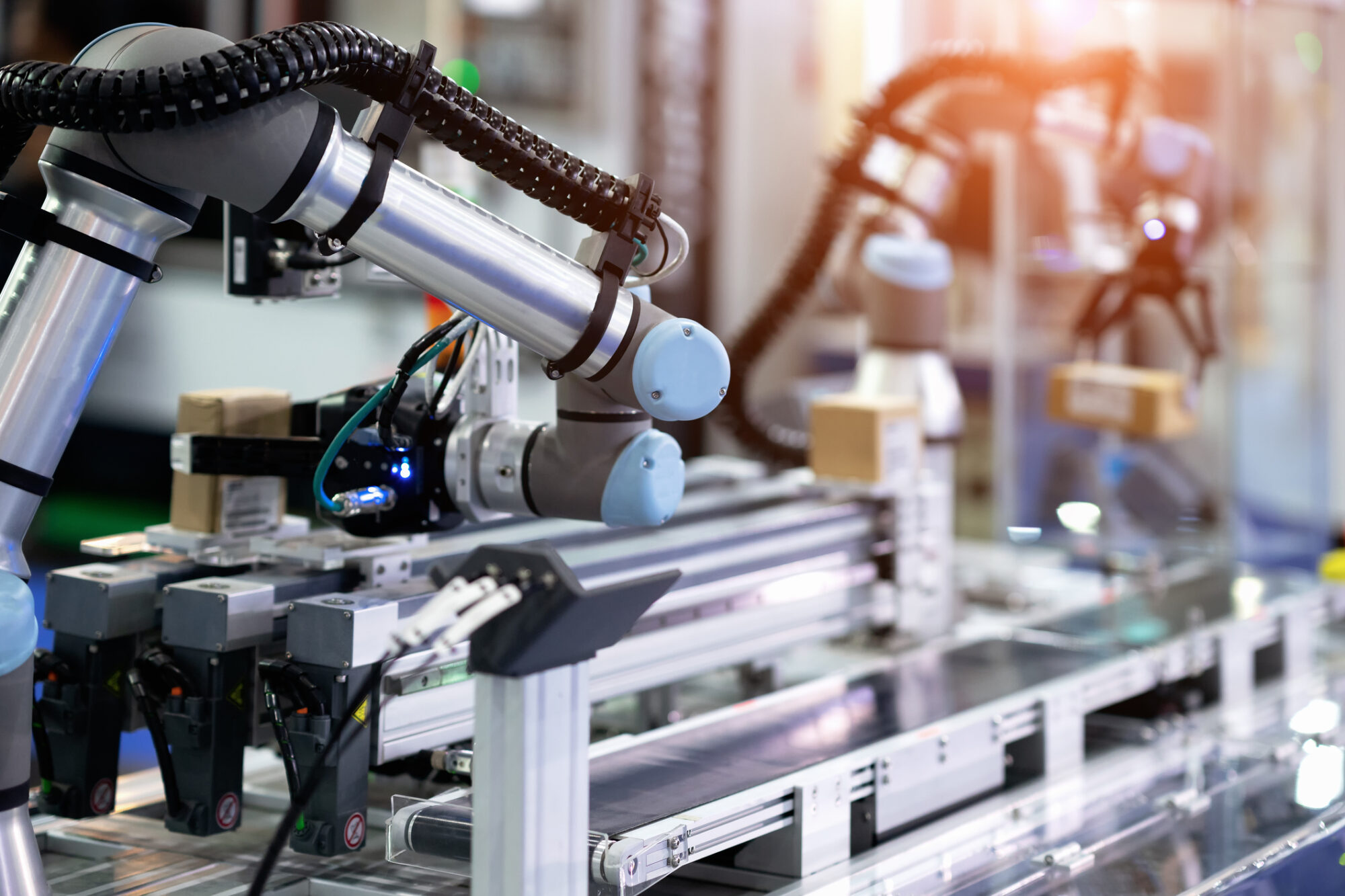
Flashback to 2015: “Hamilton” debuted on Broadway, millennials surpassed baby boomers as the largest U.S. generation and the term “Industry 4.0” was gaining traction in manufacturing circles. It was also when the Manufacturing Leadership Council created a conceptual framework called “Manufacturing 4.0.”
So what is the difference between Industry 4.0 and Manufacturing 4.0? While the terms may not sound all that distinct from each other, Manufacturing 4.0 represents the MLC’s commitment to a far-sighted, holistic approach to manufacturing’s tech-enabled metamorphosis—one that has served it well in over the past eight years.
The background: The 4.0 movement started in Germany in 2011 when the German ministries for education, research, economic affairs and energy developed a strategic initiative that would push forward the digital transformation of industrial manufacturing.
- They named this initiative Industrie 4.0. It featured an action plan that combined policy initiatives, public–private funding, strategies for technology implementation and the identification of business drivers and barriers.
The difference: For the MLC and its members, Manufacturing 4.0 is made up of transformations in three different arenas: technology, organization and leadership.
- Contrast this with Industry 4.0, which covers only technology topics—specifically nine pillars of technological innovation, which include autonomous robots, big data, cloud computing, IoT, cybersecurity, systems integration, simulation, AR/VR and additive manufacturing.
- “MLC, of course, covers all of these technologies, but, importantly, adds the dimensions of organizational and leadership change as part of its perspective on manufacturing’s digital transformation,” says David R. Brousell, the MLC’s founder, vice president and executive director.
MLC in action: While the MLC does provide member resources that focus on specific technologies and their uses in manufacturing operations, it also covers topics such as how leaders can prepare their workforce for digital transformation, how organizations should be structured to make business decisions based on manufacturing data and how leaders can ensure they set their teams up for digital success.
- Additionally, the annual Manufacturing Leadership Awards recognize not only high-performing digital manufacturing projects but also outstanding individuals who demonstrate both technological understanding and strong personal leadership.
M4.0’s continued evolution: Today, the MLC continues to use Manufacturing 4.0 as the overarching framework for its member companies’ activities.
- Its influence is apparent in the MLC’s annual Critical Issues Agenda, a member-created list of key business drivers and enablers of digital manufacturing.
- The agenda covers technological advances like smart factories and data analytics, alongside the organizational ecosystems that put such advances into operation—from the leaders who direct them to the cultures that make them succeed.
The Future of M4.0: As the MLC gets ready to set its 2023–2024 Critical Issues Agenda, it will continue to take a holistic approach to the technological changes sweeping the industry by recognizing the importance of people in making those transformations happen.
Go deeper: You can learn more about Manufacturing 4.0 by downloading the MLC’s white paper, Manufacturing in 2030: The Next Phase of Digital Evolution; reading a recent report, The Future of Industrial AI in Manufacturing; or attending its Aug. 30 virtual Executive Interview, Shifting from Disruption to Growth.

Extrapolating from the results of NTT DATA’s recent research report, Innovation Index: Shifting from Disruption to Growth, John Petrusick, Managing Director, Manufacturing — Data and Analytics Practice, offers insights into the future of data in the latest in MLC’s Manufacturing in 2030: Crystal Ball series.
Data-Driven Transformation and the Future of Human-Centric Innovation by 2030
By 2030, I envision a significant change where data flows freely from sources including the shop floor, enterprise resource planning systems and third-party external providers. Manufacturers will centralize, harmonize and analyze data to enable real-time action. This encompasses all actions, including automated actions, to maximize business efficiency. Doing so will impact aspects of the business ranging from daily production operations on the plant floor, to engaging customers in selling activities, to the development and testing of new products.
With respect to sales, products and services, manufacturers will create seamless customer experiences in which customers can purchase goods using their preferred interface. Infusing data into a design thinking-led approach will also improve overall experiences once the product is in use. From an operational data perspective, employees on the shop floor or within the business will see performance data in real time and act instantly.
Highly commoditized or repetitious manufacturing environments might function as a largely ‘headless’ or ‘dark’ operating environment. Such environments rely on processes that are highly routine, reproducible and repeatable. They will, therefore, be able to leverage physical robots in the ecosystem to take the place of today’s manual interventions. These environments will have a significant advantage in productivity and efficiency while improving safety. They may use technologies including robotic process automation for monitoring and control, generative AI for requests from outside observers, and physical robots to take actions when physical interventions are required. Nevertheless, I do not foresee a near-term scenario in which manufacturing is 100% automated with no human involvement. Through 2030 there will continue to be entire plants, production lines and core processes where the need for creativity will keep humans integral.
Empowering Manufacturing through Data-Driven Insights
Data’s role will evolve naturally, and part of the role will entail solving problems. But the primary function data will serve is to enable insights that guide the actions of individuals, software or machinery so that they deliver increasing business value.
Currently, the data sphere focuses on providing high-quality, reliable data to manufacturing business actors — humans, software, physical robots and so on. These actors need specific analytics or insights in forms such as real-time or near-real-time Key Performance Indicators from a production line on quality to make value-adding decisions. When such data indicates deteriorating quality, we may need to halt the line and perform a root cause analysis to remediate the issue to re-gain performance with thresholds.
In a preventive maintenance scenario, telemetry data from machinery might show that a machine will fail within two hours. A worker would then receive an alert prompting them to reallocate capacity from that line to others, if possible, to allow for necessary maintenance. Alternatively, in a product development scenario, we might be able to design and test a product virtually. This will help manufacturers create the right product to the correct specifications the first time around, thereby reducing time to market.
As the right analytics become available in 2030 and beyond, manufacturers will gain the real-time insights to deploy end-to-end automation using autonomous tooling. Automation may extend even to the point of delivery, potentially with no human intervention. This data-driven automation will create additional value through improved efficiency and shorter time to revenue generation.
Unlocking Future Manufacturing Success for Enhanced Plant Operations
Currently, we are observing advantages in various aspects of plant operations such as preventive maintenance and quality improvement. For example, vision robotics is already providing assessment data at all stages of manufacturing, from raw materials to finished products. Moving toward 2030, we see manufacturers that start or continue to follow data and analytics best practices gaining significant benefits. These benefits will be in part due to the advantages of an expanded role for AI and the benefits it can provide, enabled by continuously improving data quality. In combination with the Internet of Things (IoT), AI will have the potential to help manufacturers build factories that are more agile, transform their workforce, make significant progress against sustainability objectives, improve security and compliance, and more. Again, this is contingent on establishing the right data standards and practices.
Building Technology Ecosystems that Unleash Data’s Power
Realizing the potential of data as we are discussing it here will not require any singular technology, but rather an ecosystem of solutions working in concert.
Even today, when we consider the data stack, we emphasize cloud-native data solutions that shift away from monolithic platforms towards an ecosystem of best-in-breed, loosely coupled and high-use technologies and tools.
Data in 2030 will similarly require an array of elements. These range from IoT sensors on machines — many of our clients already have such systems in place or are testing them — to the ability to centralize this data and provide global visibility to it. To cite just one example, manufacturers will increasingly implement machine vision, which involves converting video into data for analysis across a wide variety of use cases from quality inspection to safety compliance.
Finding Future Success by Navigating Data’s Complexities to Overcoming Storage, Reliability, and Analytics Challenges
Data storage and reliability challenges I alluded earlier to the need for data centralization. Many of our clients have already conducted pilot projects or have implemented some of the technologies previously discussed in various plants. But most have yet to successfully centralize their data for global visibility. At the heart of this issue will be the need for investment as, historically speaking, manufacturers have not made the significant investments in their data ecosystem needed to resolve this key dependency.
On the flip side, despite the importance of data centralization, there are cases where manufacturers will need to balance their need for centralization versus a need for rapid analysis and action. In such cases, the challenge will be how to embed intelligence into a local system and thereby enable machine-learning-based decision-making at the edge.
Both challenges will be pervasive. Consider a global manufacturer or a multi-site operator aiming to achieve visibility across all their operations. They may have plants that are almost entirely automated with minimal human intervention and others that have a larger human presence. Both environments present the need for clear visibility into each plant’s operations via data, so the different plants might all require a sort of “control room” view. The first step to enabling that view is to store the data on which to base the view. The data may reside in a centralized location or at defined edge locations.
The next step is to ensure the data’s reliability, whether the data is in storage or in transit. This phase involves a data management component that underpins everything before proceeding to the analytical stage.
Data analytics challenges
After overcoming data storage and reliability challenges, manufacturers can shift to the challenge of data analytics. For most manufacturers, the data management in place today is not at a level where they can trust the data without question.
At the same time, there are potential solutions to these challenges from which two separate elements come to mind. First, from a data management perspective, manufacturers could use machine learning algorithms to conduct quality checks and make recommendations on how to master the data. This process is crucial to effective analytics.
The second element pertains to both the techniques of analysis and the human factor involved. Often, achieving success with analytics depends on clearly defining the question we are trying to answer and the action we aim to take. When discussing data and analytics, our shop floor personnel may say they lack the needed technical knowledge. But the reality is, they do not need to understand all the complexities of data. Instead, as data professionals or leaders, we should focus on the actions they take and the decisions they must make in their roles, and develop analytics capabilities accordingly.
Traditional data analytics versus decision-based analytics
Anticipating the evolved and central role the workforce will play in manufacturing in 2030, decision-driven analytics is about determining the necessary actions the workforce must take to create value in a business. First, we need to ask the right questions to guide these actions. We then identify metrics or measures to establish decision points and gauge results. Lastly, we must determine the type of data needed to create those metrics and measures.
The decision-driven approach to analytics can be simplified to four elements: actions, questions, metrics and data. The goal is to understand the actions that create value in a business, then enable these with data strategies and analytics that also yield value.
Fostering Data Literacy and Collaboration to Bridge the Gap Between IT and Business for Action-Oriented Analytics
From a technologist’s perspective, it is essential to understand what is happening in the business and what actions or decisions we are informing or enabling with the technologies we are deploying. As such, IT organizations must enhance their engagement with the business. Simultaneously, business actors might need to upskill their data comprehension.
This does not mean that all business actors must learn to write SQL queries and Python scripts or be up to speed on the latest data science modeling techniques. Rather, it means they must have the requisite level of data literacy to understand the actions they take in their business and how data could help them make better decisions. Approaching it from this angle will help manufacturers find success, in part because business teams and IT organizations are thinking similarly and working towards achieving specific business outcomes.
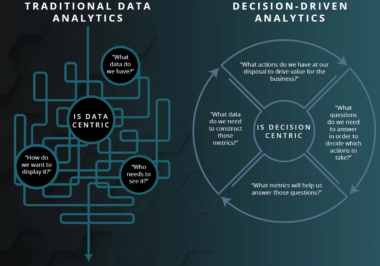
Infographic. Aspirent, an NTT DATA Company.
To bridge the gap between IT and business teams, we have found success using a structured Decision Architecture framework focused on the following critical topics:
- What actions do we have at our disposal to drive value for the business?
- What questions do we need to answer in order to decide which actions to take?
- What metrics will help us answer those questions?
- What data do we need to construct those metrics?
This decision-driven framework offers manufacturers a more targeted, action-oriented approach to data and analytics that enables the creation of specific business cases and a clear path to unlocking their data’s potential.
Empowering Manufacturing Excellence by Navigating Data-Driven Insights for Collaborative Success and Outcomes
Ultimately, data analysis and subsequent actions depend on the workforce. It is essential to ensure that we provide data in a format that the workforce can use effectively. Similarly, the speed and effectiveness with which currently top-of-mind technologies can grow is constrained by the need for data that is accurate, complete, reliable, relevant and timely. Data and analytics reside at the core of high-value business outcomes — whether driven by the workforce, AI or combinations thereof. Potential outcomes range from creating more resilient supply chains to accelerating innovation and delivering new services to engaging customers in new ways.
In short, although we have covered a lot of ground here, my single most important piece of advice is to create and maintain a focus on driving collaboration at the intersection of IT and business teams with a focus on the business context and outcomes of data usage. By doing so, manufacturers will be able to increase the business value that data solutions create and avoid complications preventing the realization of that value.
If this data discussion has sparked your interest, we invite you to check out our infographic “Innovate Confidently with Data-Driven Decisions.” It features relevant data from the 2023 NTT DATA Innovation Index.
 About the Author
About the Author
John Petrusick is a Data and Analytics Managing Director at NTT DATA, serving as the Manufacturing Industry Lead. In his role he advises manufacturers on how best to leverage their data to create business value-driven, actionable, and analytic insights to increase efficiency, sustainability, and competitiveness. He is passionate about helping clients solve their data challenges, specifically in data governance, architecture, engineering and integration, advanced analytics and business intelligence, and intelligent automation, as well as helping them implement strategies to drive digital transformation.
Six Key Takeaways: Be ‘Predictive’ to Be ‘Preventive’
A recent MLC Master Class focused on how manufacturers are using condition monitoring and predictive maintenance to avoid downtime, maximize productivity, and enhance operational efficiency. Micah Statler, Director of Industrial Technologies at Advanced Technology Services (ATS) shared his experiences and expertise in an engaging conversation with MLC’s Senior Content Director, Penelope Brown.
Here are six key takeaways from their discussion:
1. Transforming data charts into prescriptive actions
According to Statler, no matter how mature a maintenance organization is, any change is difficult and change management techniques are important because there are outside influences and new tools involved. But transforming data from a squiggly line on a chart into action is paramount.
“The biggest challenge facing any manufacturers out there today is not necessarily the collection of data, but the interpretation of that data to gain a level of insight that allows them to be successful in taking action and recognizing a return,” Statler said.
Figure 1 – maintenance maturity levels
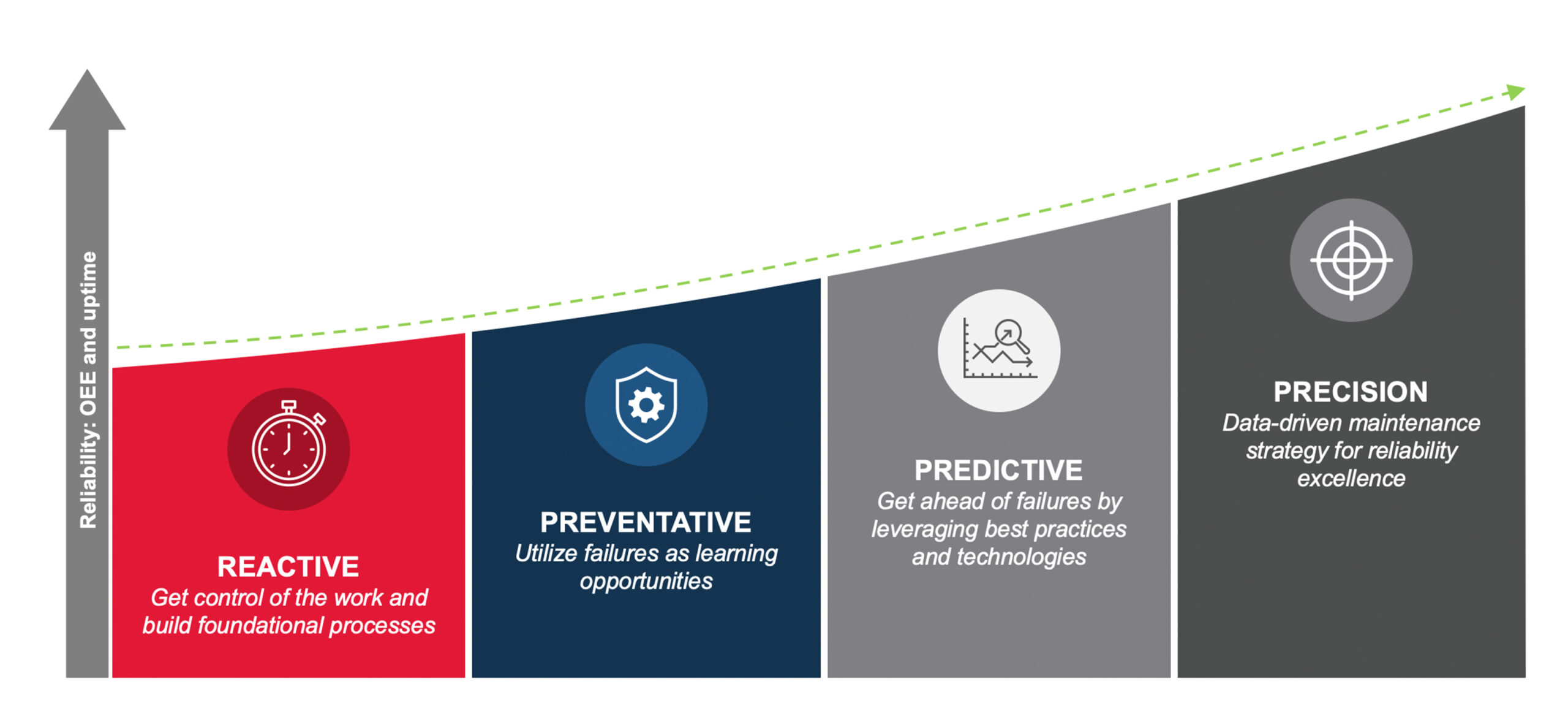
He identified four maturity levels for overall equipment effectiveness (OEE) and uptime reliability: reactive, preventative, predictive, and precision. To find where an organization falls on this maintenance maturity scale, Statler provided a few assessment questions:
- Are you planning your work?
- Are you able to put a plan forward and able to execute that without a lot of schedule breakers?
- Are you able hit your production targets?
2. Eating the condition monitoring elephant one bite at a time
For companies looking to implement best practices for condition monitoring, don’t try to boil the ocean. Instead look to where you’re seeing the most impactful downtime and eat the elephant one bite at a time. Some areas to look at first include where you are spending the most on MRO parts and repairs, what problems cause your most expensive maintenance labor, and what assets experience issues regularly.
Statler also recommended avoiding a single firefighter to look at these issues.
“We have an opportunity to do it in a much more efficient way, and also in a way that doesn’t mean it is an individual contributor, and therefore your progress – if you’re not dependent on an individual – can’t backslide from it. It’s more ingrained in your culture and it just becomes how you do business,” he said.
3. Combatting alert fatigue with collaboration
“Cross-functional teams are critical. It’s not just about the data collection,” Statler said. “We have to do something with that data, and we have to really align on what the ultimate outcome is.”
Further, to avoid what Statler called “alert fatigue,” there must be trust and the right level of communication between the factory floor and those asking them to take an action from the data. Change management comes into play here, and the collaborative team – including data scientists, developers, technology departments and the maintenance team – needs to be realistic about how mature a company’s maintenance program is.
4. The beautiful circle: AI and data analytics
Analytics and statistical process control has been around for a long time, but newer technologies like artificial intelligence (AI) help manufacturers see broader trends and take findings from one measure to another.
To illustrate this, Statler mentioned the core four traditional predictive maintenance analysis: oil, vibration, ultrasonic, and thermographic.
“What we’re able to do with the tools that we have today is, say there’s something else that I want to measure, we can apply a lot of the same models to that,” he said. “We’re getting a lot better at being able to not only say there’s a problem, there’s a change in that trend, but being able to predict what is the remaining useful life of that component that’s being monitored.”
“Ultimately,” he said, “we don’t want to get to a position where, when we notice a change in trend, we make a component change. We want to be at a point where we’re able to make minor but precision adjustments to anything that’s being measured.”
This is where AI and advanced analytics come into play.
“The better we can deliver the service, the better we can train the model, the better we can deliver the service. It’s a beautiful circle,” Statler concluded.
5. Avoiding “service on a stick” partners
For those looking to partner with a technology provider to achieve better predictive maintenance, it’s as important to look at what a company does now as it is to look at the company’s vision for the future.
“You want to pick a partner that is going to grow long-term with you and be able to work within the platforms and the tools and the data sets that you have today and in the future,” said Statler.
He also recommended looking at the service offering, itself: is it an end-to-end solution that not only collects the data and monitors the equipment but also helps you interpret the data in real time?
Statler cautioned against providers who offer one-size-fits-all solutions, and likened them to getting a plain corn dog at the fair.
“There are an infinite number of options out there for you to buy hardware, tons of platforms available, and a lot of them have coupled those together,” he said. “Internally, we call that ‘service on a stick.’”
6. A fully digital future for condition monitoring and predictive maintenance
Condition monitoring and predictive maintenance are primed for a future full of innovation.
“The technology will be accelerating so quickly and be so ingrained that we’re not even going to notice that the industry has transformed. It will be fully digital,” he said.
In fact, he pointed to technologies that we’re already seeing today. In particular, smart hands or augmented reality tools will transform the business, and people will view dashboards through heads-up displays in proximity of specific assets.
Beyond the technology itself, Statler expects to see a shift in the technical capabilities of on-site staff as well.
“There’s going to be a real integration of vendors with technology vendors and equipment vendors being able to, real-time, see what maintenance technicians see – and that’s where the smart hands come into play,” Statler said.
MLC members may access the full recording under Master Class in the Resource Center of the Member Dashboard.
More information about the Master Class Series is available online.
Balancing Resiliency and Efficiency
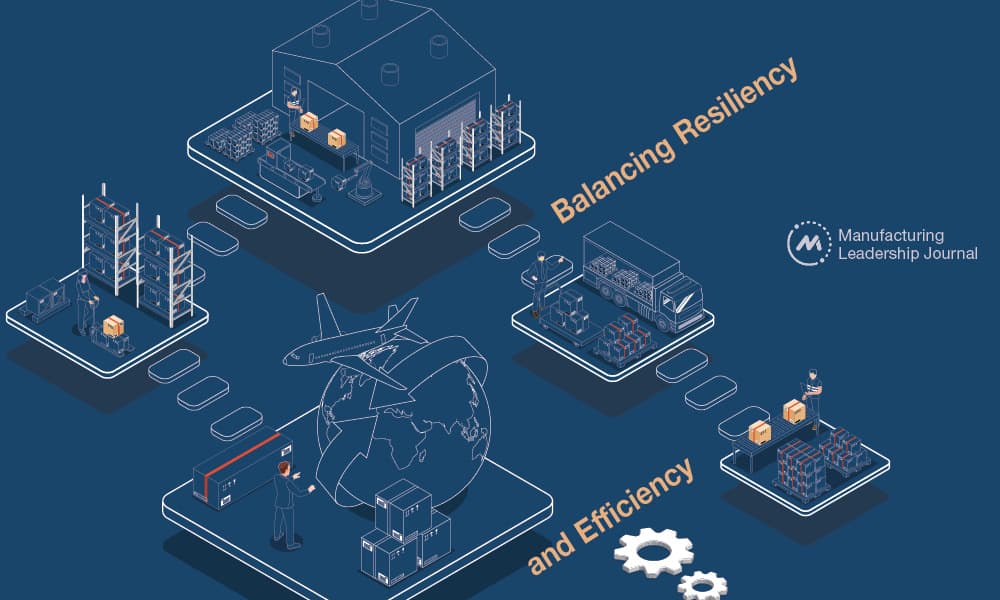
Supply chain executives face a new optimization problem: becoming more resilient while minimizing costs. Here’s how to strike the right balance.

TAKEAWAYS:
● Disruptions over the past few years have exposed vulnerabilities in manufacturers’ existing supply chains.
● As a result, conventional approaches may no longer be enough to achieve the desired level of supply chain assurance.
● This article highlights a range of new approaches and tools manufacturers are deploying as disruption becomes the norm.
Shipping delays, parts shortages, and transportation delays due to truck driver shortages and congested ports had the greatest impact on manufacturing companies in the past 12–18 months, according to survey respondents (figure 1). Production and profits are the two key areas where this impact has been felt, and a majority of respondents report a negative impact to profits of up to 13%.

These factors suggest that supply chain executives are working to solve a new optimization problem with more stringent constraints: Costs still need to be minimized, yet resilience and redundancy should be built in to assure supply. This calculation is ever more challenging given the rising costs of energy and materials and labor, current workforce shortages, and ongoing logistics challenges resulting from two years of pandemic disruptions.1
The exigencies of the current environment are bringing a new focus on time-tested skill sets. Several supply chain executives surveyed emphasized that in volatile environments, the familiar skill of supplier relationship management can become even more important to avoid disruption. However, junior employees may need to be taught these skills as most are used to working in a demand-driven environment. The sudden shift to a supply-constrained business model meant not all employees were armed with the needed relationship management skills to work closely with suppliers as partners to manage forecasts, lead times, inventory strategies, and costs.
In many cases, this partnership has developed as quarterly supplier reviews turned into daily calls between senior supply chain executives and the CEOs or CFOs of their suppliers, sharing information and helping each other navigate the business environment (figure 2). For example, one company worked through its supplier as a partner to find an alternate source of chips during the chip shortage, thereby achieving greater flexibility and visibility. Another company worked closely with suppliers as shipping options from Asia were reduced and freight was moved to air cargo, which incurred higher costs.2

Proactively Managing Multiple Tiers
Supply chain executives have been drawn into management not just of their primary suppliers, but increasingly of secondary and tertiary suppliers as well. Several executives interviewed noted that previously they did not get involved beyond Tier 1, but the dynamics of the current environment drove a need to increase visibility. For example, if Tier 3 suppliers were unable to give firm dates for shipping, often this potential weak point wasn’t visible to primary suppliers or to the company itself, and potential delays were not flagged early enough. To address this risk, one company interviewed has begun working closely with its own suppliers to apply transparent decision-making based on metrics and benchmarking to that supplier’s suppliers. This can provide the company more visibility and clarity in terms of the companies with whom its suppliers are contracting.
The semiconductor shortage, which has affected industries from automotive to handheld electronics, raises the question of how to achieve resilience when the market is highly concentrated. In the semiconductor supply chain, some suppliers are unique—for example, worldwide, there’s only one epoxy supplier and two suppliers of cutting-edge chips.3 Moreover, the global semiconductor industry has been running at over 95% utilization since December 2020, which is well over the 80% utilization rate normally considered full capacity, suggesting additional production capacity is needed.4

“Supply chain executives have been drawn into management not just of their primary suppliers, but also secondary and tertiary suppliers.”
The passage of the CHIPS Act in 2022 has helped jump start investment in additional production capacity in the United States. For example, a semiconductor manufacturer is considering building four semiconductor chip fabrication plants (fabs) at a cost totaling nearly US$30 billion. Intel announced plans for an initial investment of more than US$20 billion to construct two new fabs in Ohio, a new region for chip-making.5 And it isn’t just US-based companies considering adding capacity in the country: South Korea’s Samsung has proposed a US$17 billion fab in Taylor, Texas, and has also recently submitted an application with the Texas comptroller outlining a long-term plan to build up to 11 chip-making plants in Texas, an investment that would be worth more than US$192 billion in the coming decade. Arizona is also poised to receive investment for chip manufacturing.
Supplier Risk Considerations
As supply chains elongate and supply bases increase with new sources created, procurement teams are becoming more central to enterprise risk management. Procurement and supplier risk management functions should work more closely with suppliers and their compliance and risk management departments. Executives interviewed for the study are engaging more often and earlier with third-party risk management protocols. The historic approach of a point-in-time assessment, even if done annually, may no longer be sufficient for organizational risk management objectives. Companies must sense, monitor, and be ready to take action as needed.
Sensing: Leading companies are beginning to use intelligent sensing of data, including social media, in combination with assessments and investigations, to enhance the effectiveness of their suppliers in managing third-party risk.
Monitoring: As companies identify their critical risk domains, from financial health to geopolitics to cybersecurity, they can develop technology-enabled processes to proactively monitor their third-party ecosystem and identify the early warning signs that could trigger action.
Taking action: For quick action, such as switching to a new supplier, having a preapproved response plan can be critical. One company requested all its vendors participate in response planning, outlining COVID-19 contingencies, such as if parts weren’t received and trucks stopped delivering. Similarly, additional suppliers need to be “prequalified,” such that the contracting work could be done already, shortening lead times.
Scenario planning: Management teams can also identify potential scenarios in advance, along with sub criteria that help indicate the best response plan in a given situation. Executives should decide in advance who has decision-making power in each scenario and how to, for example, reduce downtime and address breach of contract incidents.
Moving Away from JIT Approaches
Manufacturers seem to be drifting away—maybe only temporarily—from just-in-time approaches to help manage the constraints of higher labor and materials costs, logistics bottlenecks, and labor shortages. One executive explained that in early 2021 his team decided they needed to move away from the focus on cost and orient increasingly on business continuity and customer satisfaction. Executives draw a distinction between operational challenges, which can be solved through improved supplier relationships and visibility, and logistics and external challenges, which are out of the supplier’s or company’s control. However, to manage external challenges, supply chain leaders need to be well-equipped and strike the right balance between agility, resilience, and efficiency (figure 3).6

Building out agile processes: agility and flexibility are potential game changers. Flexibility of design could be used to standardize product-specific parts, allowing a standardized part to be used across products that would require minimal customization. For example, Tesla uses a number of chips in its vehicles for various control and infotainment systems, and its self-driving software. During the ongoing semiconductor shortage, Tesla swiftly changed to new microcontrollers, while simultaneously developing firmware for new chips produced by new suppliers.7
Mitigating transportation challenges: the persistent labor shortage in manufacturing, which has been exacerbated by the pandemic, has contributed to port delays, slower warehouse processing, and a truck driver shortage. As one executive explained, no matter how reliable your supplier, a labor shortage at a port can still cause a shipping delay. To address this disruption, building redundancy or resilience is needed. One company shared that it is looking at diversifying supply routes on the West Coast, possibly adding a Canadian port.
Developing resiliency: to build resiliency, in some cases manufacturers are actively partnering with other manufacturers or are investing in their suppliers to support building more production capacity. Executives interviewed described a continuum of collaboration ranging from buying capacity in advance from suppliers to actually taking equity stakes in certain critical suppliers. There have been several examples in which industrial manufacturers are expanding their activities into adjacent areas. Our study highlights that Tier 1/Tier 2 suppliers are likely to coinvest or partner with other Tier 1/Tier 2 suppliers in emerging technologies to develop new capabilities and advance through logistics and transportation challenges.
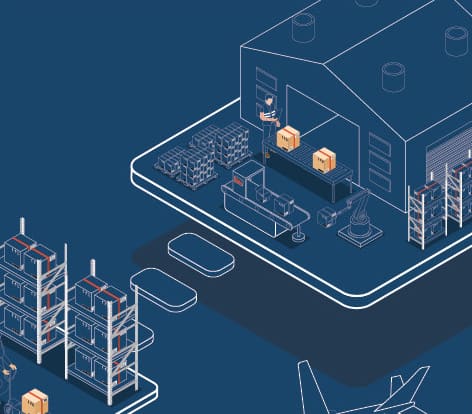
“Manufacturers seem to be drifting away – maybe only temporarily – from Just-in-Time supply chain approaches.”
In one example, an industrial technology company made an acquisition to expand its presence through existing distribution channels, and also to expand in the aftermarket filtration space. In other cases, investment is focused on fostering more competition in a given market, ultimately to build more choice among existing producers. These additional investments could clearly have an impact on the industry’s cost structure, but that reduction in margin could be worth the resilience ultimately provided through developing a deeper market with more producers.
Getting to Resiliency
As manufacturing executives solve the current supply chain optimization problem, they are leveraging familiar mitigation strategies to balance resilience with efficiency. But they are also wielding new skill sets and tools to manage the tougher constraints of rising costs, labor shortages, and logistics bottlenecks to achieve agility.
Here are three sets of recommendation to boost resiliency:
Strengthen existing supplier relationships to increase resilience:
● Work closely with suppliers to help them apply metrics to their Tier 2, 3, 4 suppliers
● Agree on mutually beneficial KPIs so that all parties know what to expect from one another
● Help suppliers maintain data on their suppliers’ throughput to boost transparency and assurance
● Train newer employees on relationship management
Engage with multiple suppliers to balance efficiency and resilience:
● Correctly calculate the benefits of engaging multiple suppliers with the costs of lower margins and reduced control
● Use dual sourcing to achieve some cost control where possible, evaluating investing in development of additional suppliers in a niche market
● Have scenarios in place and alternative suppliers preapproved, conducting practice drills to make contingency plans more effective
● Locate additional production or alternate suppliers close to markets to reduce transportation costs and exposure to shipping delays
Employ digital solutions to boost efficiency and resilience:
● Implement warehouse automation in response to workforce shortages
● Move to digital solutions that increase visibility beyond Tier 2 suppliers
● Boost collaboration by initiating high-level information-sharing between all parties with the help of easy to-use technologies
● Track potential sources of logistical disruption such as restricted routes and workforce shortages
Manufacturing executives are acutely aware of causes for both internal and external disruption and are taking steps to build redundancy into supply chains to assure business continuity. Though these efforts may lower margins, they can increase agility, reflecting the new balance that manufacturers are achieving between efficiency and resilience. N
Endnotes
1. Stanley Porter and Kate Hardin, “Energy and commodities outlook: Disruptions from the Russian invasion of Ukraine,” Wall Street Journal, June 3, 2022.
2. Insights gleaned from manufacturing executives’ interviews conducted in July 2022.
3. Deloitte, Anchor of global semiconductor: Asia Pacific takes off, 2021, p. 9.
4. Semiconductor Industry Association, Increasing chip production: Industry shouldering in to addressing shortages, 2022, p. 1.
5. Intel Corporation, “Intel announces initial investment of over €33 billion for R&D and manufacturing in EU,” news release, March 15, 2022.
6. Jim Kilpatrick, Paul Delesalle, and Adam Mussomeli, The new supply chain equilibrium, Deloitte Insights, April 1, 2022.
7. Lambert, “How Tesla pivoted to avoid the global chip shortage that could last years,” Electrek, May 3, 2021.
About the authors:

Paul Wellener is a Principal within the US Industrial Products & Construction practice with Deloitte Consulting LLP. He has more than three decades of experience in the industrial products and automotive sectors and has focused on helping organizations address major transformations.

Stephen Laaper is a principal at Deloitte Consulting LLP and a manufacturing strategy and smart operations leader in Deloitte’s Supply Chain & Network Operations practice. He helped build Deloitte’s Digital Supply Networks (DSN) methodology that uses existing and “next gen” technologies to drive efficiencies in operations and across the supply chain.

Kate Hardin, executive director of Deloitte’s Research Center for Energy and Industrials, has worked in the energy industry for 25 years. She leads Deloitte’s research team covering the implications of the energy transition for the industrial, oil, gas, and power sectors.

Aaron Parrott is a managing director with Deloitte Consulting LLP. With more than 20 years of experience in supply chain and network operations, Parrott’s focus is helping clients complete large- scale transformation in the supply network, developing analytic solutions to address difficult business issues, and implementing digital solutions to manage complex supply networks.
This article contains general information only, does not constitute professional advice or services, and should not be used as a basis for any decision or action that may affect your business. The authors shall not be responsible for any loss sustained by any person who relies on this article.



